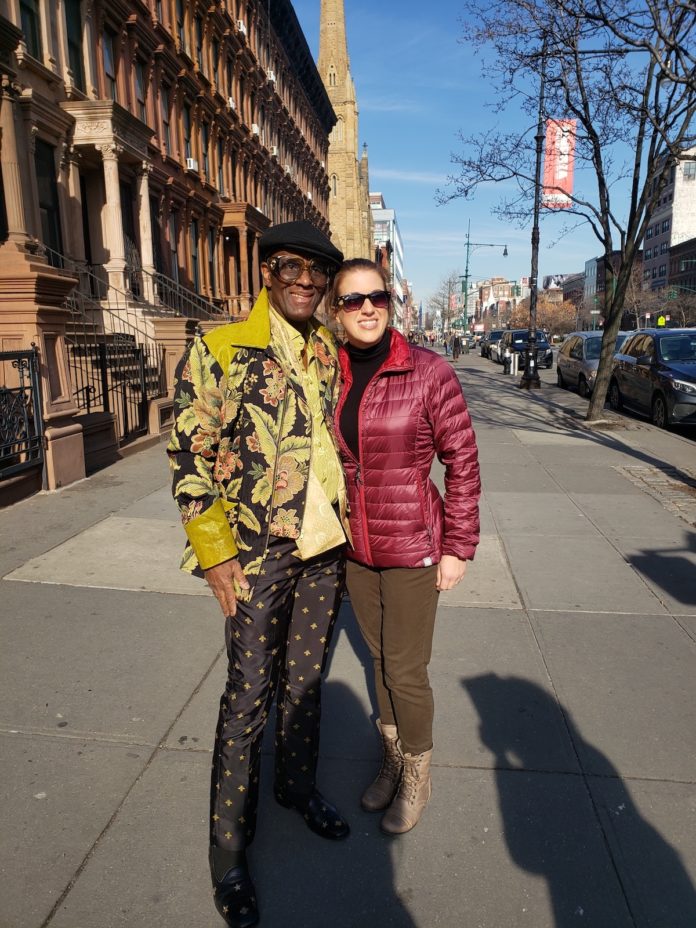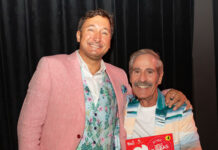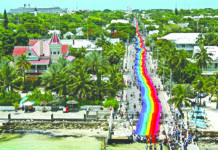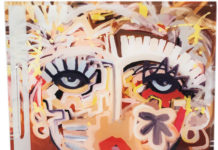Today is what a true New Yorker would call “brisk and beautiful” — painfully blue skies and temperatures in the mid-40s — and this South Florida gal has to agree. For years, I’ve traveled somewhat regularly to New York for that requisite cultural shot in the arm. It’s tough to break away from Key West in the height of season, but sometimes a necessary distraction is just that … necessary. The recent implementation of nonstop direct flights from Key West International Airport has made the possibility of quick cultural getaways more of a reality.
On my New York visits, I’ve walked miles through museums, caught experimental works, pop-ups and budding theatrical runs. In the deep, full art basket of New York though, genuine experiences don’t just bubble to the surface. No disrespect to the Whitney, but there’s just so much more.
Which is how I came to find myself on an invigorating walk across 125th in Harlem, strolling up to the Harriet Tubman Memorial (“Swing Low” by Alison Saar) to meet Mikaila Brown for the “Harlem Black Fashion Tour.” Brown is more than a local ambassador to one of the last few honest art scenes in the city (though she’s very good in that role). She’s also a fashion designer, a cultural anthropologist with a doctorate from Columbia, and the creative development force behind the game-changing Common Thread Project. The project aims to do for fashion what Anthony Bourdain did for cuisine — that is to say, make the unknown elements accessible and to humanize the whole endeavor. As Brown will tell you, “VanGogh, Gucci sneakers and female barbers aren’t nearly as unrelated as they seem. There are many reasons people wear what they wear, ranging from their abuella’s penchant for religious paraphernalia to international foreign policy.”
Brown herself is impeccably styled, model-tall and insanely intelligent. She’d be truly intimidating if she wasn’t just so much damn fun. She starts her tour, chatting like an old friend and exuding an obvious enthusiasm for her topic. As we wander the blocks, she moves through distinct eras in Harlem’s history, starting with the Harlem Renaissance. It’s a full-fledged sensory experience (or a “deep disco dive” to use Brown’s words) complete with historical photos on her tablet and nods to the architectural elements we pass. In the 1920s, the arts exploded in the neighborhood as the Harlem Renaissance took hold. Early arrivals from the Great Migration, a roughly 50-year period during which Black Americans moved north and west to urban centers, created a cultural mecca. Imagine Langston Hughes and Zora Neale Hurston writing their masterpieces, while Louis Armstrong and Josephine Baker perform down the block. In fashion terms, the era is synonymous with finery and hats, above all, served as the defining style element of one’s identity. Our first stop is the embodiment of that period—the “Flamekeeper’s Hat Club,” so named as their mission is to pass “the torch of good taste from one generation to the next.” Floor-to-ceiling displays of hats radiate classic elegance in wool and cotton, with twists of colorful contemporary fashion sprinkled throughout, while the gorgeous shop, all lacquered wood and brick, echoes 1920s sophistication.
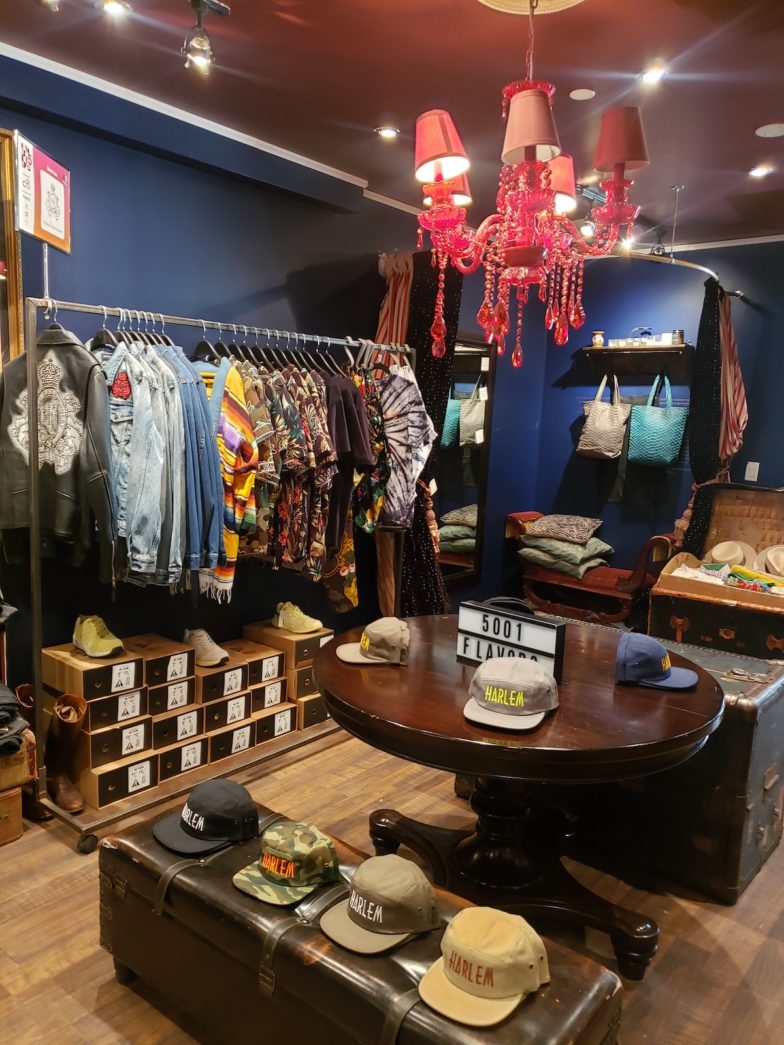
As we move toward the next shop and the next era, the Civil Rights Movement, Brown discusses the rise of zoot suits — colorful loose-fitting jackets with wide lapels. Aside from straightforward style, these suits served as an important symbol of cultural resistance and social justice. In the 1940s, the US War Production Board regulated dyes (dark colors were cheapest) and fabric (an expensive import), encouraging men to wear dark, slim fit suits in an effort to aid the war effort. Black men in Harlem had grown tired of their marginalized status and saw the imposition on personal style as an affront. Zoot suits became a form of cultural capital, a way of asserting independence and commanding attention.
Brown steers the end of the tour into more recent history with a discussion of the rise of hip-hop fashion in the 1980s and 90s, specifically Guy and Sharene Wood, who rose to prominence with their brand “5001 Flavors” when they helped develop the iconic style of Notorious B.I.G. The pair then went on to design for a subsequent scroll of music and fashion heavies. Their shop, Harlem Haberdashery, is adorned with lush fabrics, dark walls and a gallery worth of classic black and white photos.
After trying on some looks fit for someone much cooler than I, we wander back outside only to run into fashion legend Dapper Dan. In the 1980s, Dapper Dan struggled to find a foothold in fashion as many vendors refused to do business with him due to his race and his location. Not one to be deterred, he burst onto the fashion scene in the 1980s when he began creating bold mash-ups of bootleg fabrics, coupled with his own printed textiles. He carved a turbulent path through the subsequent decades, working with hip-hop royalty, sometimes “underground” as he fought litigation from fashion giants like Fendi. Ultimately, he came out on top and now has his own atelier in partnership with Gucci — not in Paris, as is the standard, but in Harlem. As we part ways, he tells me how lucky I am to get a personal tour from Brown. It’s the one thing I’ve heard today that I can honestly say I already knew.
THE COMMON
THREAD PROJECT
www.tctproject.com
The shops:
FlameKeepers Hat Club
273 West 121st St
212.531.FKHC (3542)
Flamekeepershatclub.com
Harlem Haberdashery
245 Lenox Ave
646-707-0070
Harlemhaberdashery.com
NiLu Gift Boutique
191 Malcolm X Blvd
shopnilu.com
Harlem Underground Clothing Company
20 East 125th St
212-987-9385
Harlemunderground.com
Kaarta Imports & Exports
2079 A. Clayton Powell Jr Blvd
212-866-5190











